Making homemade strawberry jam is an excellent option if you’ve got too much fruit sitting in the kitchen. This is a quick and easy recipe that produces vibrant, red jam that has way more flavor than store-bought products.
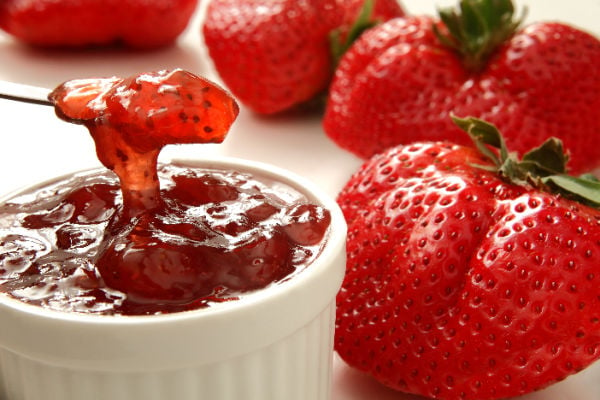
You may also like to check out our guide to storing strawberries where we tested nine different ways to store them for maximum freshness.
Table of Contents
The Basic Steps to Make Jam
Sterilize: Wash the jars in warm, soapy water then heat in the oven to kill any germs.
Fruit prep: Use a paring knife to hull the strawberries and then slice them in half. Crush them with a potato masher or fork.
Heat: Bring all ingredients to a simmer, stirring occasionally until the sugar melts.
Boil: Cook the mixture for about 10 minutes or until it begins to thicken.
Canning: While still hot, pour the jam into jars and seal before storing.
Strawberry Jam Recipe
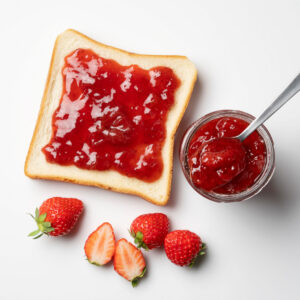
Homemade Strawberry Jam
Ingredients
- 2 lbs strawberries
- 1 tbsp lemon juice
- 1 lemon zested
- 2 cups sugar
- 2 tbsp powdered pectin
Instructions
- Clean and sterilize jars, then set aside. See advice below for how to sterilize jars.
- Wash strawberries in cold water then place them on a chopping board. Use a paring knife to cut out the stem, then chop each berry in half.
- Transfer the berries to a large heavy-bottom saucepan and crush them using a fork or masher.
- Add lemon juice, lemon zest, sugar, and pectin to the berries. Cook on medium heat, stirring occasionally until the liquid begins to simmer.
- Increase the heat until the mixture reaches a rolling boil. Stir constantly for 10 minutes until the jam thickens.
- Carefully ladle the jam into jars and seal shut, then allow to cool to room temperature before storing.
Nutrition
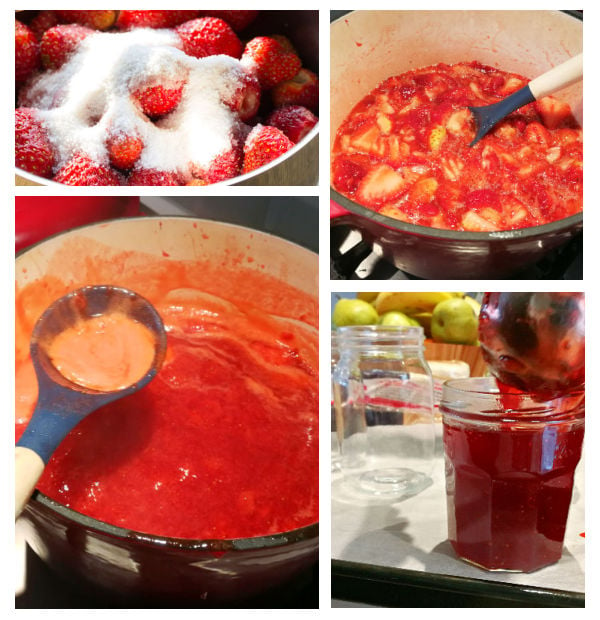
How to Test When the Jam is Done
There are two different methods for testing if jam is ready. They both work well, but using a thermometer is a simple way to tell.
Thermometer test:
Use a candy thermometer to test the jam’s temperature. It needs to reach 220°F (104°C) as this is the point where the pectin and sugar will bond into a gel.
Frozen plate test:
If you don’t have a thermometer then place a small plate in the freezer at the start of jam making. When you think the jam is ready, remove the plate and place a small spoonful onto it. Return to the freezer for 60 seconds then remove. If the jam wrinkles when you run your finger through it, it’s ready. Otherwise, keep cooking in 5-minute intervals and keep testing.
Whichever test you use, the jam will probably seem runnier than it should be in the pot. But after 24 hours in the jar, it should fully set up (thicken).
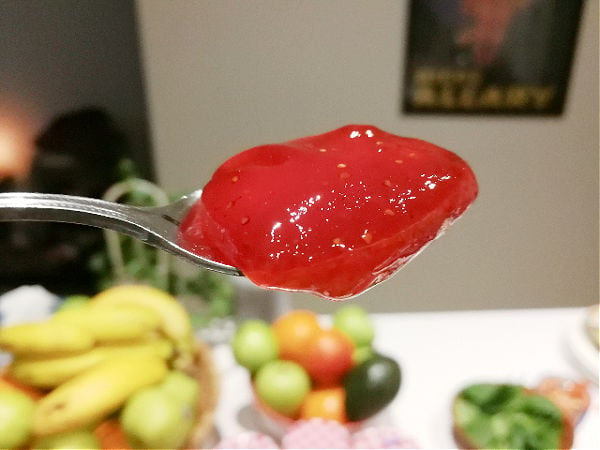
Tips for Improving Strawberry Jam
- If you are going to freeze your jam, then leave a gap at the top of the jar to allow for expansion.
- Use a large saucepan to make jam as it will rise when boiling. You also want to avoid cast iron cookware as it will taint the jam’s flavor.
- Use lemon juice to help balance the sweetness of the berries and sugar. It also helps the jam set and works as a preservative.
- If the jam is too runny a day after making, pour it back into the saucepan and reduce further until the right consistency results. Remember to re-sterilize the jars.
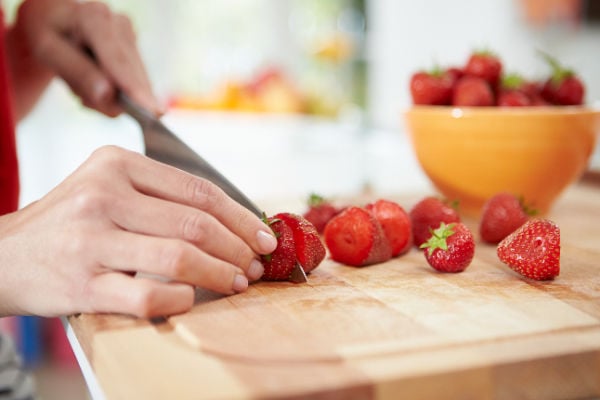
How to Store Homemade Jam
Jam can be stored in the pantry for up to 12 months when correctly sealed in sanitized jars. Otherwise, store jam in a sealed container refrigerated for up to one month. Freezer jam will last for 6 months before it starts to lose its quality.
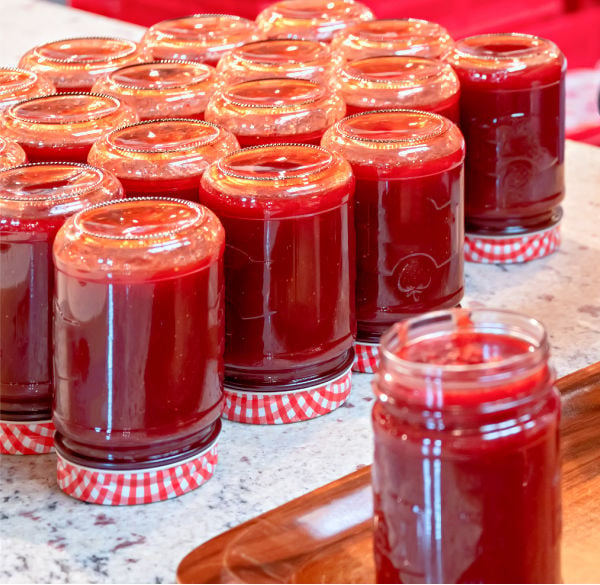
Best Uses for Strawberry Jam
- ribbon jam through homemade strawberry ice cream
- layer a strawberry crostata with sweet goodness
- drizzle over cheesecakes and other sweet food
- spread between buttered brioche bread
- stir into plain yogurt with fresh fruit
- use as a topping for pancakes and waffles
- fill biscuits, donuts, muffins, and cupcakes
- add fancy labels and gift jars to friends and family
Commonly Asked Questions
You’ll find that many jam recipes call for pectin, a naturally occurring starch. When combined with sugar and acid it thickens, exactly what jam makers want. Although pectin is found in all fruits, the amount varies. Fruit like apples, lemons, and grapefruit contain high levels of pectin, while strawberries contain low levels.
If you want to make strawberry jam that has a thickness like store-bought products, you’ll need to use pectin. In our recipe, feel free to leave it out if you’re happy with a runnier conserve.
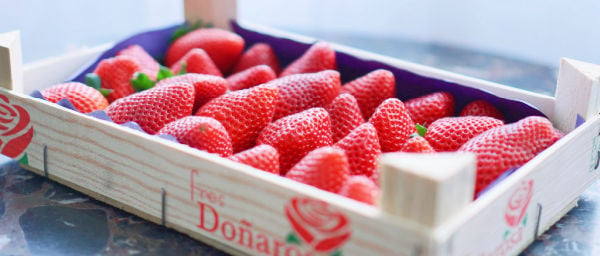
Your best option is to use half a tablespoon of chia seeds or cornstarch for every cup of berries. Otherwise, reduce the heat a little and allow the jam to cook longer; this option will reduce the yield.
To safely sterilize jars for jamming, fill a sink with hot, soapy water and wash all the jars and lids. Rinse with fresh water then place the wet jars facing upside down on a baking tray. There is no need to dry them.
Carefully transfer the tray of jars and their lids to the oven, preheated to 320°F (160°C). Heat the jars for 10-15 minutes and they’ll be ready to use.
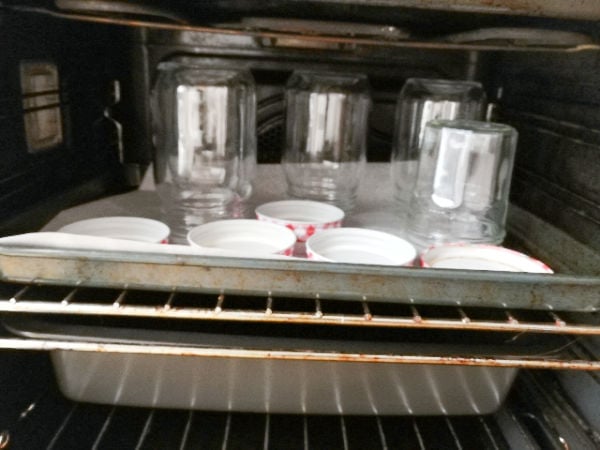
Frozen strawberries are excellent for making jam. They tend to contain more water which means they’ll need a longer total cook time.
It’s perfectly fine to replace some or all of the strawberries with other varieties of fruit. Keep in mind that they have different levels of pectin and sweetness. For example, if you use grapefruit instead, they’ll have much more natural pectin, so you don’t need to use a store-bought jam setter. Grapefruit is also much sourer, so a little extra sugar wouldn’t hurt.
If you prefer apricots then check out our simple apricot jam recipe.
Fresh lemon juice has a superior flavor compared to bottled juice. However, the acidity levels in fresh lemons can vary a lot. It’s best to use bottled lemon juice for more reliable results when it comes to jam making.
Sugar plays a key role in helping jam set, so aim for an equal weight of fruit and sugar in recipes. It’s possible to make a low sugar version by reducing it, but at some point, your jam simply won’t set.
Interesting reading: Best apricot jam substitutes.
Lumpy vs Smooth Strawberry Jam
Mashing the fruit and cooking it will help to break up the fruit, but there will still be some big chunks that remain. Some people love these bits on their toast! If you prefer a smooth jelly recipe, then you can process it with a stick blender. We prefer to do this before the jam reaches a dangerous temperature that could cause splash burns.
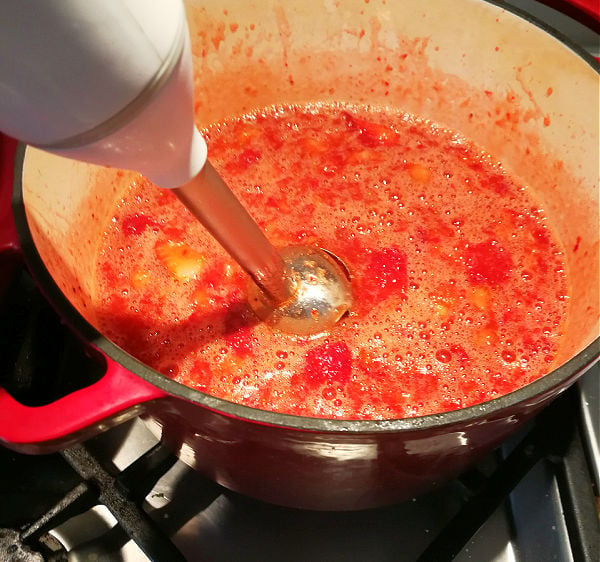
Summing Up
Making small batch strawberry jam is a great way to use up leftover strawberries. You get a fruity spread with better flavor than commercially made products.
If you’re looking to make lots of jam, you’ll do well to invest in a thermometer. They’re a relatively cheap piece of equipment that will save you the hassle of freezing plates. It is a more exact method of testing if the jam’s ready.

Leave a Reply